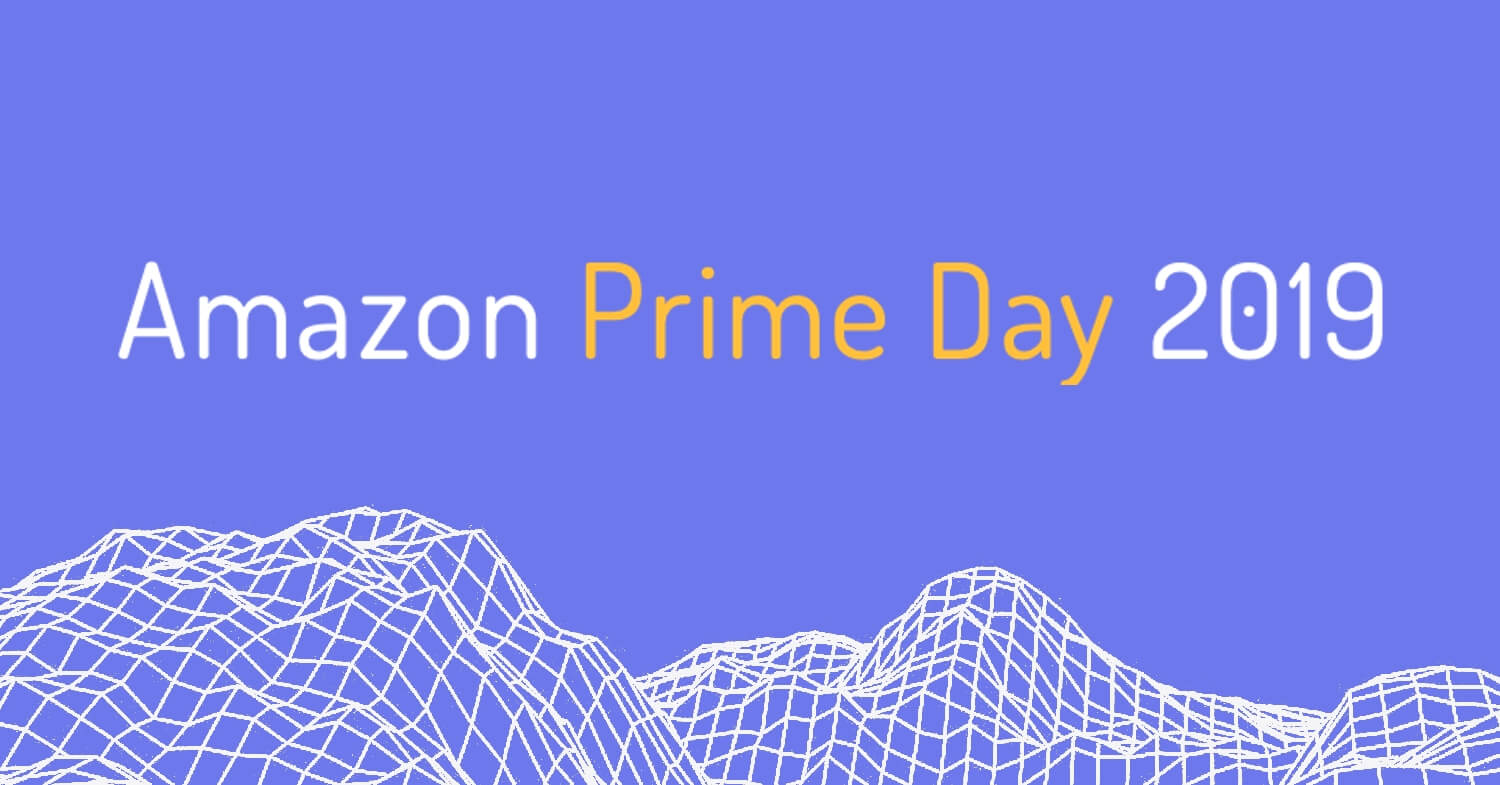On Prime Day 2019, the biggest winners were known brands and Amazon devices, as Amazon-owned private label brands took a back seat, according to Marketplace Pulse research. Over a million products were available with a Prime Day deal, but as competing retailers like Walmart and Target launched their shopping events, Amazon shifted focus to exclusive products and new product launches.
Amazon Prime Day is the annual shopping holiday that’s exclusive to Prime members. This year, Prime Day started on July 15th at midnight PT (or 3 AM on the East Coast) and lasted for 48 hours. Launched in 2015, Prime Day has grown from a 24 hours event to a 36 hours event last year, followed by the longest yet 48 hours this year.
Last year, Prime Day was celebrated in 17 countries including the US, UK, Spain, Singapore, Netherlands, Mexico, Luxembourg, Japan, Italy, India, Germany, France, China, Canada, Belgium, Austria, and Australia. In 2019, Prime Day will expand to the United Arab Emirates, for a total of 18 countries.
Prime Day is now a significant marketing opportunity and shopping event for other retailers. Walmart, Target, eBay, Google Shopping, and many other online retailers all ran their special promotions to coincide with the annual sale on Amazon. Some products, like the Instant Pot pressure cooker, were available at the same discount from many retailers - including Amazon, as well as their competition. Now that Amazon’s rivals caught up with Prime Day offerings, at least for the top brands, the company is expected to increasingly focus on exclusive deals and new product launches on future Prime Day events.
This year Amazon, together with singer Lady Gaga, launched a beauty line Haus Laboratories. At the end of July 15th - the first day of Prime Day - pushed by the Amazon marketing machine, the first Haus Laboratories product rose as high as a 58th best-seller in the Beauty & Personal Care department. A department which otherwise includes tens of millions of products. The rapid rise in rankings showcased the power and reach of Prime Day promotions for kickstarting new products. Many more brands are expected to be birthed on Amazon this way in the future.
Prime Day is not just for products sold by Amazon. On the contrary, marketplace sellers supplied many of the deals. According to Amazon, sellers sold more than $2 billion of products during two days of Prime Day and saw the biggest 24-hour sales day in Amazon history on July 15th. Last Prime Day, small and medium-sized businesses selling on Amazon surpassed $1.5 billion in sales in 36 hours.
1.3 million
Products
Number of products with a Prime Day deal.
43,550
Peak Active Deals
The most active deals worldwide were on 9AM PST July 16th, second day of Prime Day.
25-50%
Discount Percent
Most deals were discounted 25-50%.
In the US, Prime Day page included a live video with a carousel of products featured in the broadcast. Biggest discounts for most in-demand products like TVs were launched on video in real-time, selling out minutes later. The live video functionality mimicked shopping TV shows most consumers have seen before. The page then provided a few categories to choose from like Amazon Devices, Top Brands, Trending Deals, and others, as well as a grid of fifty featured deals. Featured deals changed throughout the day. Internationally Prime Day didn’t include a live video, but the rest of the functionality, branding, and categories were mostly the same.
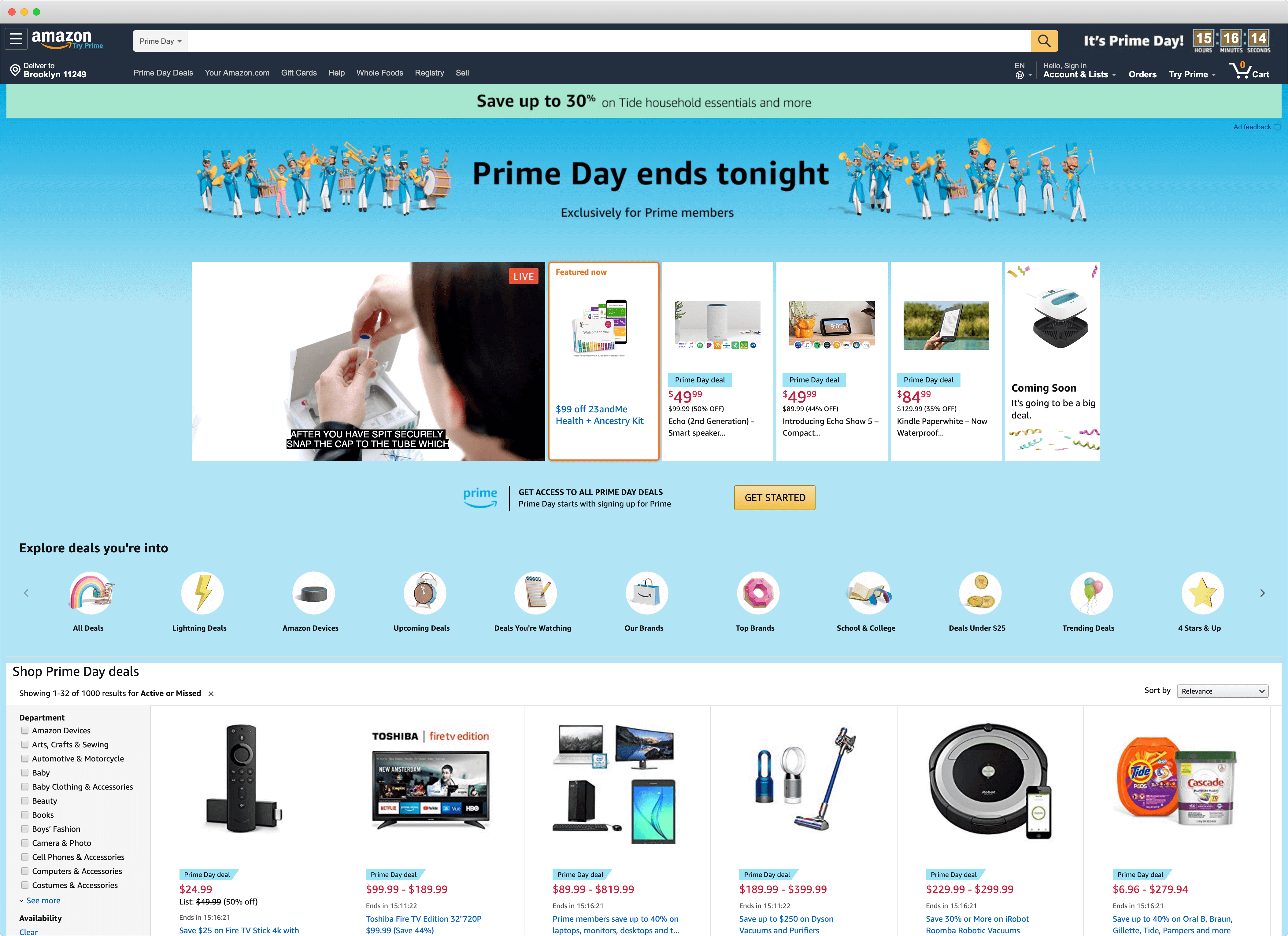
Contents
- Introduction
- The Shape of Prime Day
- Third-Party Sellers
- Millions of Deals, Not Everything Sells
- Prime Day Launches
- Amazon Private Label Brands and Devices
- Prime Membership
- Competition
- Promotion
- Amazon Technical Difficulties
- Final Thoughts
The Shape of Prime Day
The Shape of Prime Day is the number of active deals by time. On both days of Prime Day, the first peak was 11 AM PST/2pm EST, followed by the second peak at 6 PM PST/9pm EST. The number of active deals peak during those times because they were expected to be when most shoppers do their shopping during the day and after work. During the night the number of active deals quickly decreased, leaving mostly long-running deals.
Prime Day in the US covers 3 hours of timezone difference; however, internationally, Prime Day has a single peak most often around 2–3 PM local time.
USA and Japan had the most products available on Prime Day - 300,000 each. Mexico and the UK had 100,000 each, followed by Germany, India, and Spain with 90,000. Canada had 80,000, France had 60,000, and Italy and China had 40,000 each. The smallest Prime Day was in Australia with 10,000 products.
Most Prime Day deals were discounted 25-50%, followed by 10-25%, and 50-70%. Product price was most often under $25, followed by $25-50, and $50-100.
Electronics, Clothing, Shoes & Jewelry, and Home & Kitchen departments had the most products participating in Prime Day. Furthermore, most of the deals featured by Amazon were in of these departments.
The next tier of departments was Tools & Home Improvement, Health, Household & Baby Care, Sports & Outdoors, and Industrial & Scientific. Beauty & Personal Care, Cell Phones & Accessories, Automotive Parts & Accessories, and Toys & Games followed next.
Third-Party Sellers
Prime Day is not just for products sold by Amazon. On the contrary, marketplace sellers supplied many of the deals. According to Amazon, sellers sold more than $2 billion of products during two days of Prime Day and saw the biggest 24-hour sales day in Amazon history on July 15th. Last Prime Day, small and medium-sized businesses selling on Amazon surpassed $1.5 billion in sales in 36 hours.
“Prime Day 2019 went extremely well for us this year. We were a little wary at first with it being a two-day event, not knowing if the momentum would carry for 48 hours straight. We doubled our sales both days so far, compared to the last Prime Day. In the end, this has been our best Prime Day event out of them all. We attribute this to selling fewer products overall on Amazon but selling more partnered brands where we are the exclusive representation of the brand on Amazon.com.”
– Jeremy Navarre, Avalanche Brands
Most sellers recorded significant sales growth compared to the rest of July.
“Prime Day 2019 was way better than last year. Last year we pushed multiple lightning deals, and promos and were expecting higher results. This year, we scaled back on the promotion side, expecting something similar to 2018, but were pleased with the day overall:
YOY 2018 we were up 10%.
YOY 2019 we were up 33%.”– Ryan Mulvany, Quiverr Collective
For some sellers, sales increased compared to other days in July even without actively participating in Prime Day - “Double regular sales so far. We didn’t get any deals approved, but we are doing better than last year,” a seller said. During the event, shoppers not only look at the Prime Day deals but shop more overall.
Multiple sellers mentioned that not all of the deals submitted were approved, highlighting that before the event, Amazon was analyzing potential deals.
“Promotions-driven sales among our brand clients were slightly stronger than last year. However, our clients had to submit many more deals in order to get approved for few for which they did get approved. Several of our clients were frustrated to have their Amazon coupons disappear without explanation on day 2 of the PRIME Days.”
– James Thompson, Buy Box Experts
Sellers also noticed that sales increased on other marketplaces outside of Amazon, highlighting that Prime Day halo effect is lifting sales across all of online retail.
“Prime Day was super good for us. We almost doubled our average Monday sales on the Prime Shipment side, observed about 60% increase in our sales on Merchant Fulfilled side of the business on Amazon. YOY, our sales have doubled on both sides. We are active on all other marketplaces and saw a bump of anywhere between 15% to 40% on other non-Amazon marketplaces.”
– Rupesh Sanghavi, ErgodE Inc
However, not all sellers were happy. “The Lighting Deal we ran was disappointing, as has been the case in the past since there are so many competing deals. People seem immune to the offer,” one seller said. The seller added that unless they see an opportunity to boost placement of a well-performing product with ad dollars, they likely won’t be running a deal next year. Nonetheless, their sales were double compared to last year.
Millions of Deals, Not Everything Sells
Prime Day includes millions of deals worldwide, however many of them don’t have the demand. Despite the discounts.
During the event, many deals ended without selling out, some with barely a few sales. Deals on Prime Day have varying degrees of exposure, for example, featured deals were included in the homepage as well as the live video streams. Many of those sold out in minutes. The rest are fighting for attention, hoping the algorithm ranks them first, but not unlike the rest of Amazon, there are too many products to surface them all.
Amazon, as well as third-party sellers, have created more deals than there is demand for in hopes to make Prime Day the biggest event in terms of choice. Previous Prime Day events have been labeled “disappointing” by the consumers as well as the press, alluding to the number of deals on products consumers didn’t care for like garbage bags, kitchen towels, or toothpaste. The number of deals only grew this year; nonetheless, Amazon is focused on curating the experience to feature the best deals throughout the event.
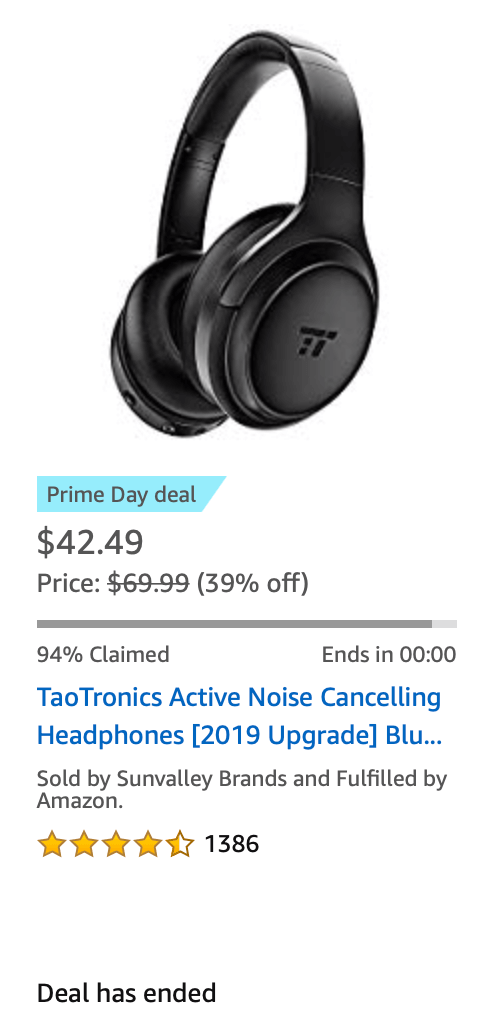
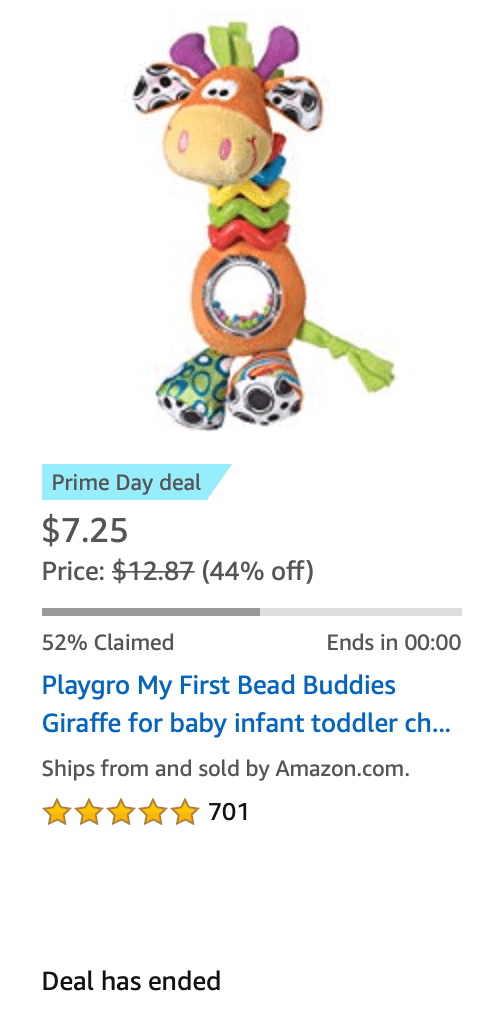

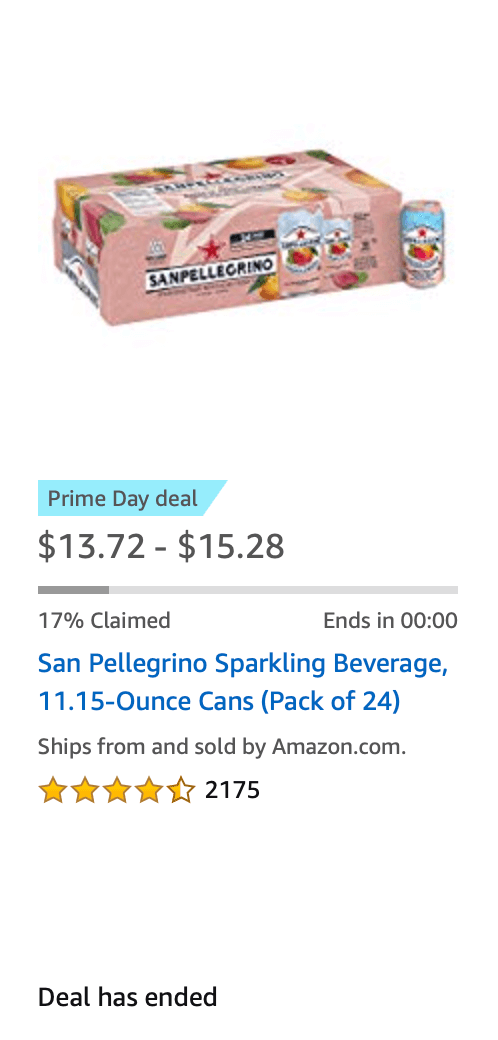
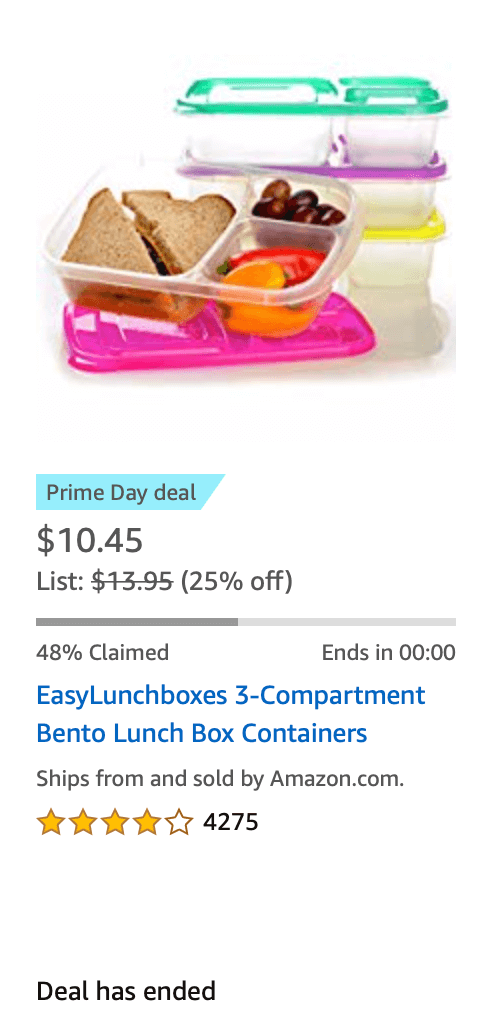
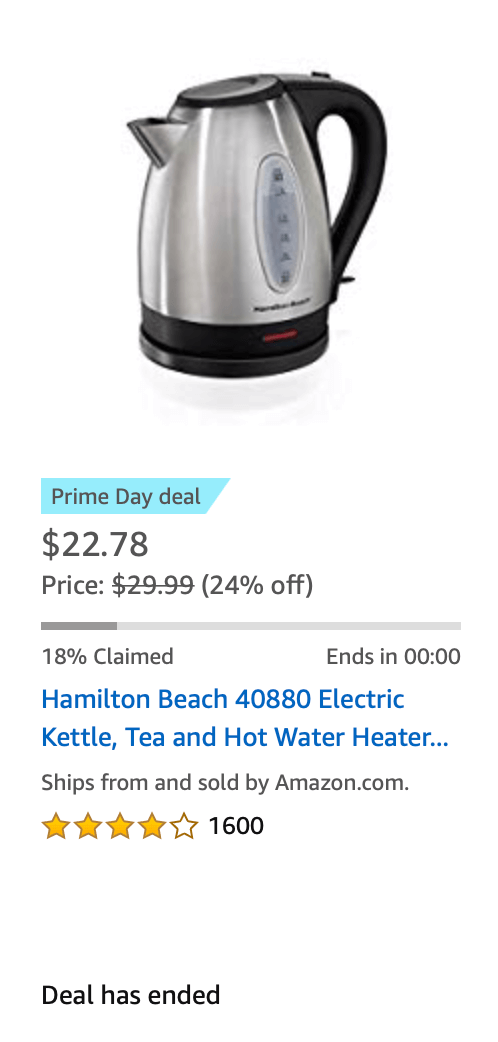
Prime Day Launches
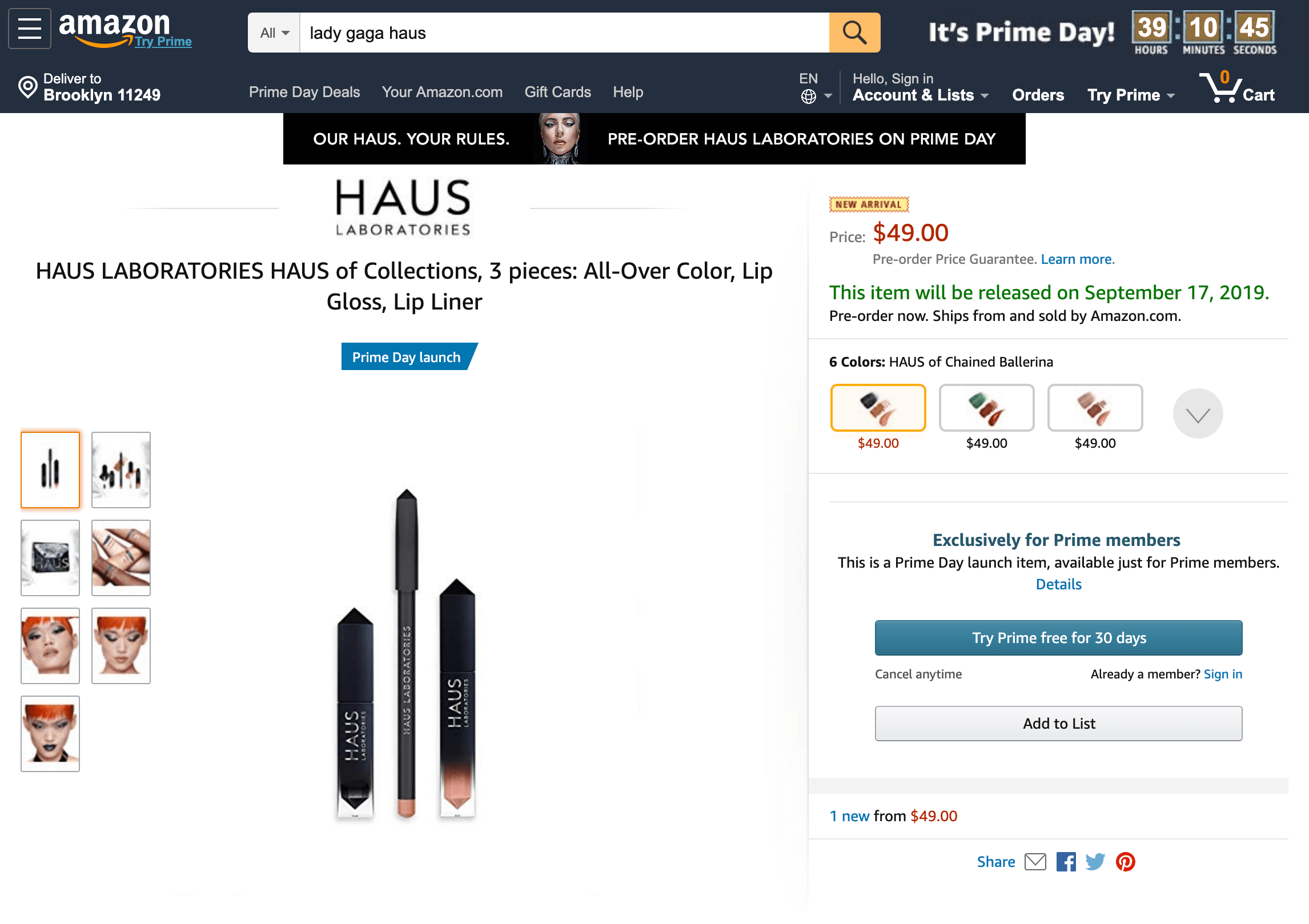
This year Amazon, together with singer Lady Gaga, launched a beauty line Haus Laboratories. It hasn’t previously done an exclusive global deal with a big celebrity-backed beauty brand, the company said.
“Haus Laboratories, the startup founded by Lady Gaga, initially planned to sell its beauty line directly to consumers online without any partners or retail distribution, according to a company spokeswoman. But it began talking with Amazon in the fourth quarter of last year.”
– Alexandra Bruell, The Wall Street Journal
At the end of July 15th - the first day of Prime Day - pushed by the Amazon marketing machine, the first Haus Laboratories rose as high as a 58th best-seller in the Beauty & Personal Care department. A department which otherwise includes tens of millions of products. The rapid rise in rankings showcased the power and reach of Prime Day promotions for kickstarting new products, however, now the question remains can a premium product line like Haus Laboratories survive and surface on Amazon once the marketing budgets shrink.
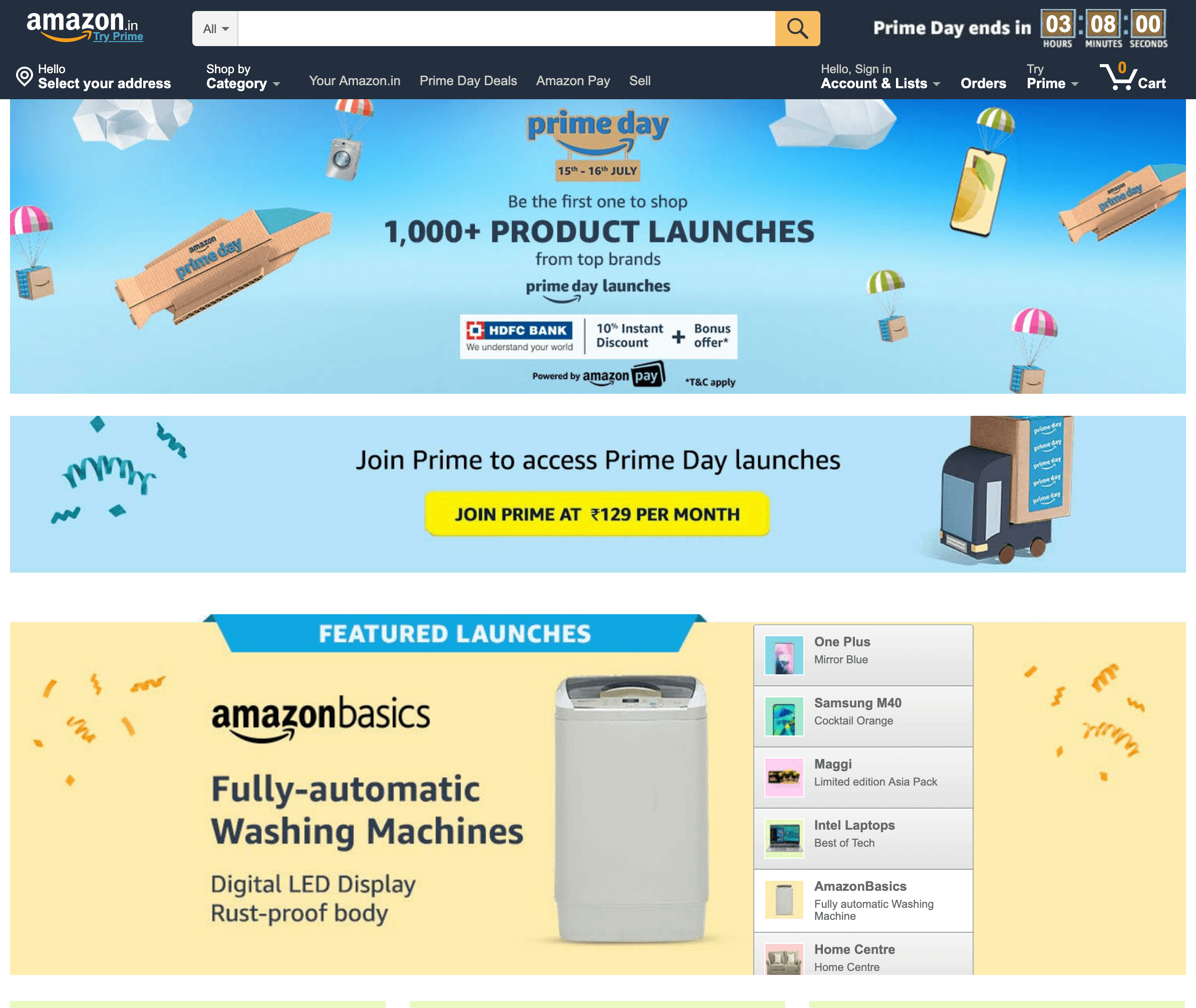
Except for a few dozen exclusive products like the Haus Laboratories beauty line, Amazon didn’t focus on launches in most countries. Except for India.
Prime Day in India featured over a thousand new product launches, including new exclusive products on Amazon by established brands as well as new items by AmazonBasics. In India, new products were a big focus, together with deals on existing products.
Amazon Private Label Brands and Devices
Every Prime Day the best-selling products are Amazon’s Echo devices with Alexa voice assistant and Kindle e-book readers. Amazon devices get featured first, get the biggest discounts, and have enough inventory to be on the homepage throughout the whole event. This year was no different - Amazon devices were the best-sellers thanks to big discounts and prominent placement.
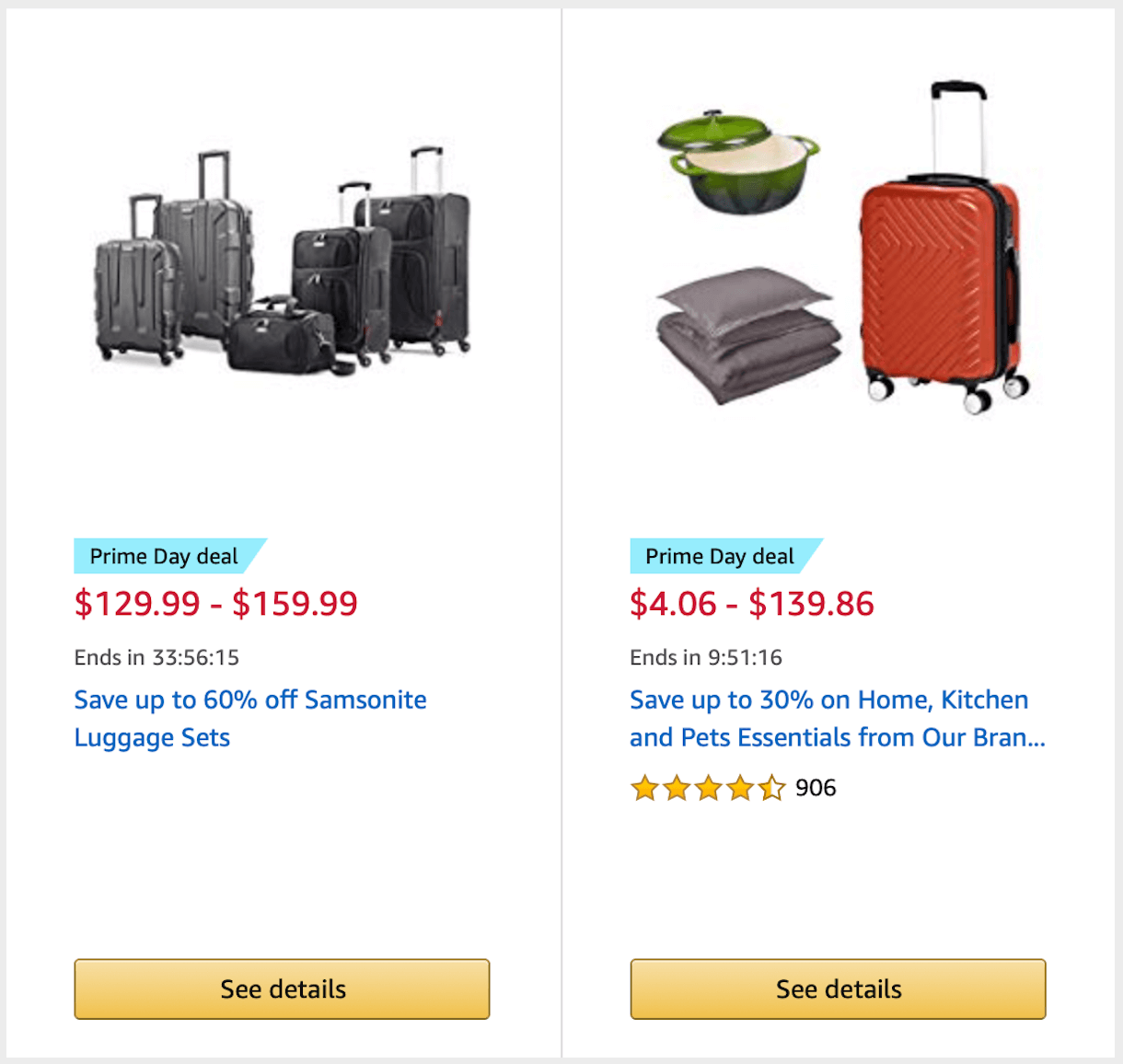
Amazon has launched hundreds of own private label brands; however, they didn’t receive prominent placement compared to other deals on Prime Day. Out of the fifty deals featured on the homepage of Prime Day in each country, five or so were Amazon devices, and only one or two owned private label brands.
Although sometimes the deals ranking algorithm would place established brands side-by-side with Amazon-owned brands, for example, Samsonite luggage next to AmazonBasics luggage. Despite this Samsonite luggage was featured longer throughout the event and had a bigger discount, propelling Samsonite products to the top of the best-sellers list in the Clothing department.
In the example below, 7 out of 48 deals on Amazon.com were Amazon brands, 10 out of 50 deals on Amazon.co.uk were Amazon brands, and 3 out of 40 deals on Amazon.co.jp were Amazon brands.



Prime Membership
“In business, I look for economic castles protected by unbreachable moats,” famously said Warren Buffet, an American business magnate and philanthropist. An economic moat is a competitive advantage that one company has over other companies in the same industry: the wider the moat, the larger and more sustainable the competitive advantage of a business. Amazon has multiple moats, but Prime is likely the most important one.
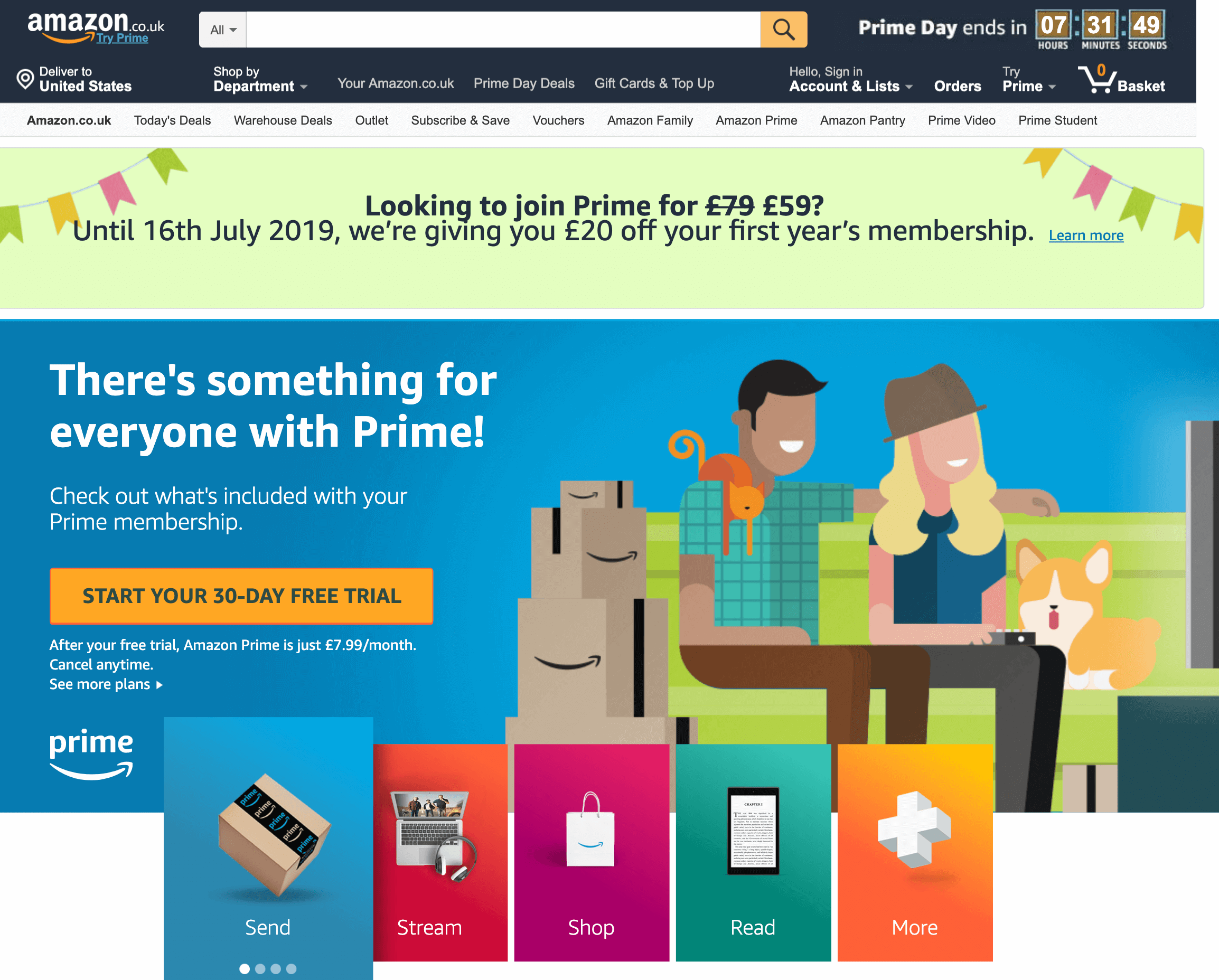
“The traditional retailers are using the event to steer shoppers to their stores, their house brands or their own online offerings in what is typically a slow month. But none of them sells a similar membership program that can help offset e-commerce’s razor-thin profit margins,” wrote Sebastian Herrera and Sarah Nassauer in The Wall Street Journal article “The One Amazon Prime Day Deal That Walmart and Target Can’t Match.”
Amazon now has over 100 million Prime members worldwide, and Prime Day is both an event to grow the number of members but also one of the selling points of having a membership. For example, after Prime Day 2018, the company said that “Amazon welcomed more new Prime members on July 16th than any previous day in Amazon history.”
This year to grow the Prime membership, Amazon in the UK discounted it to £79 instead of £59 for the first year. As a result “Amazon welcomed more new Prime members on July 15th than any previous day, and almost as many on July 16th – making these the two biggest days ever for member signups,” the company said.
Competition
Prime Day is now a considerable marketing opportunity and shopping event for other retailers. Walmart, Target, eBay, Google Shopping, and many other online retailers all ran their special promotions to coincide with the annual sale on Amazon.
Target announced deal days which ran on the same days as Prime Day - July 15th and 16th. Walmart offered promotions from July 14th-17th, while eBay announced a July 15th “crash sale.”
However, the number of deals available and the overall investment into the event paled in comparison to Amazon. Competing retailers took advantage of the enormous halo effect of Prime Day, and thus saw an increase in sales compared to a regular day in July. Nonetheless, the opportunity in the future is to do more than rely on the halo effect and invest in marketing, curation, and live events beyond posting a list of deals online.
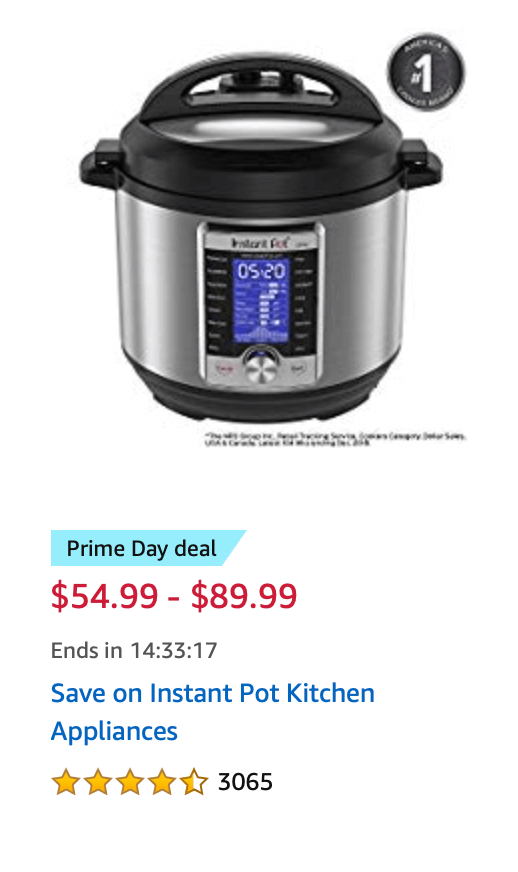

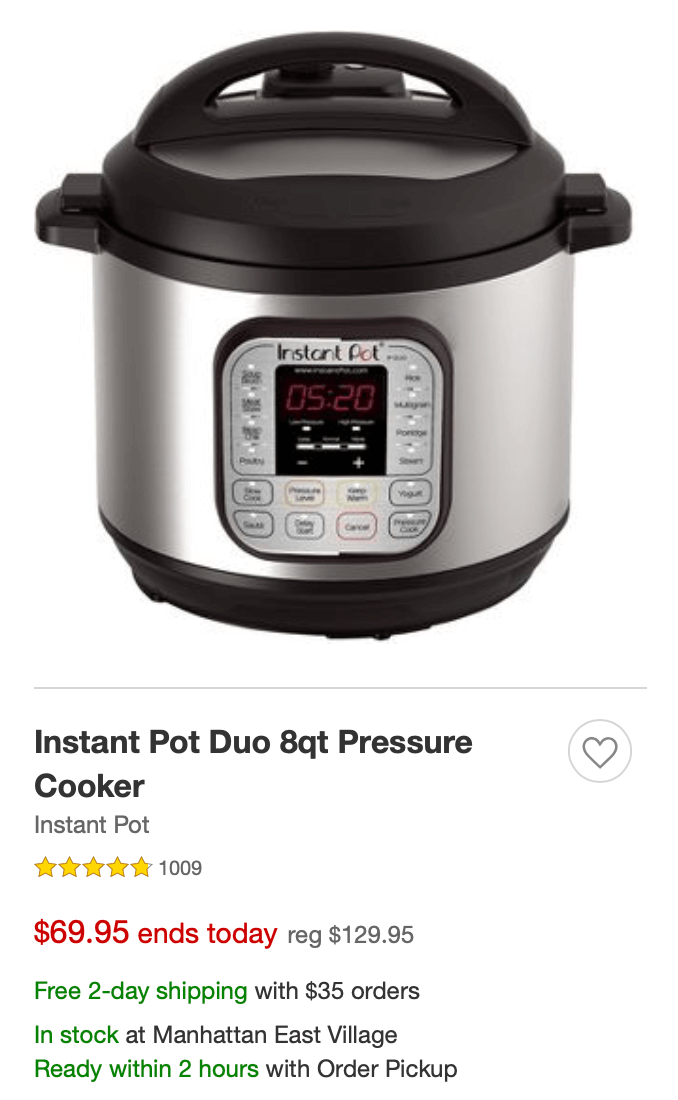


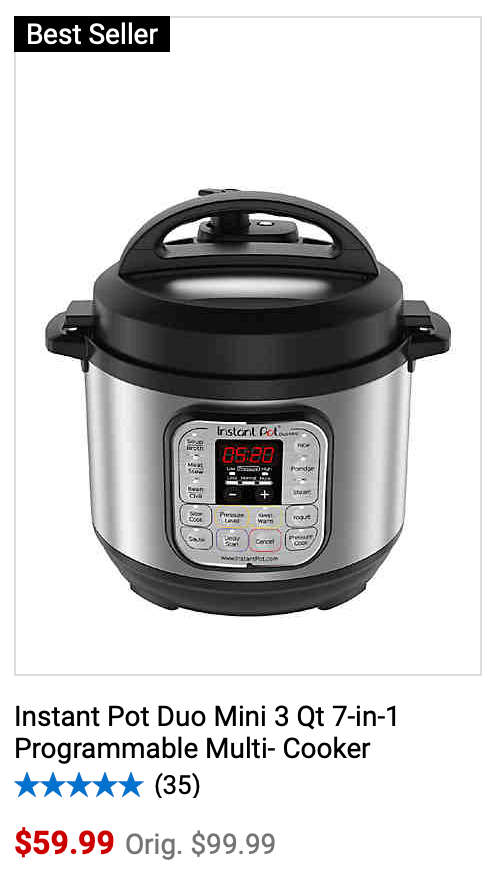
Some products, like the Instant Pot pressure cooker, were available at the same discount from many retailers - including Amazon, as well as their competition. Now that Amazon’s rivals caught up with Prime Day offerings, at least for the top brands, the company is expected to increasingly focus on exclusive deals and new product launches on future Prime Day events.
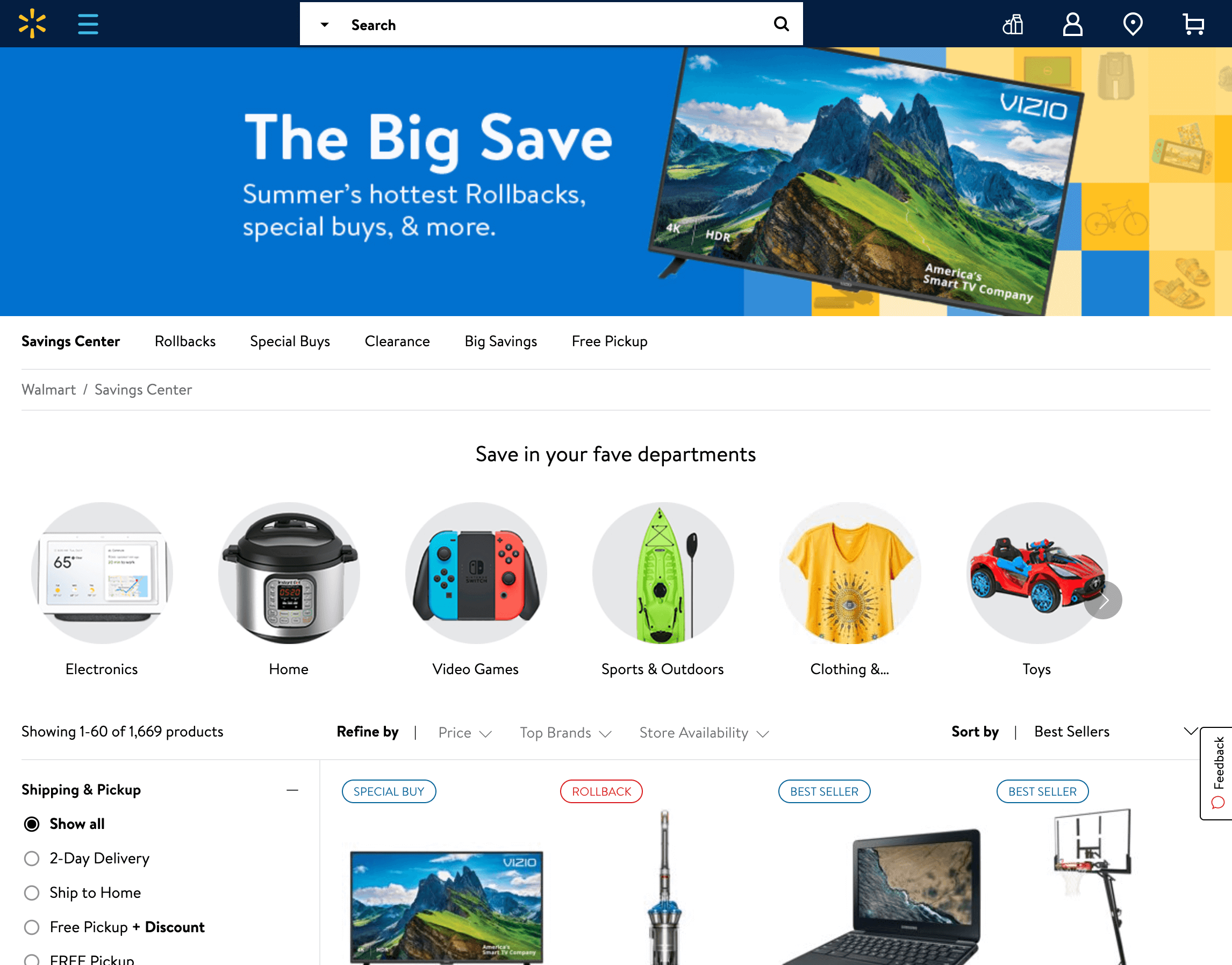
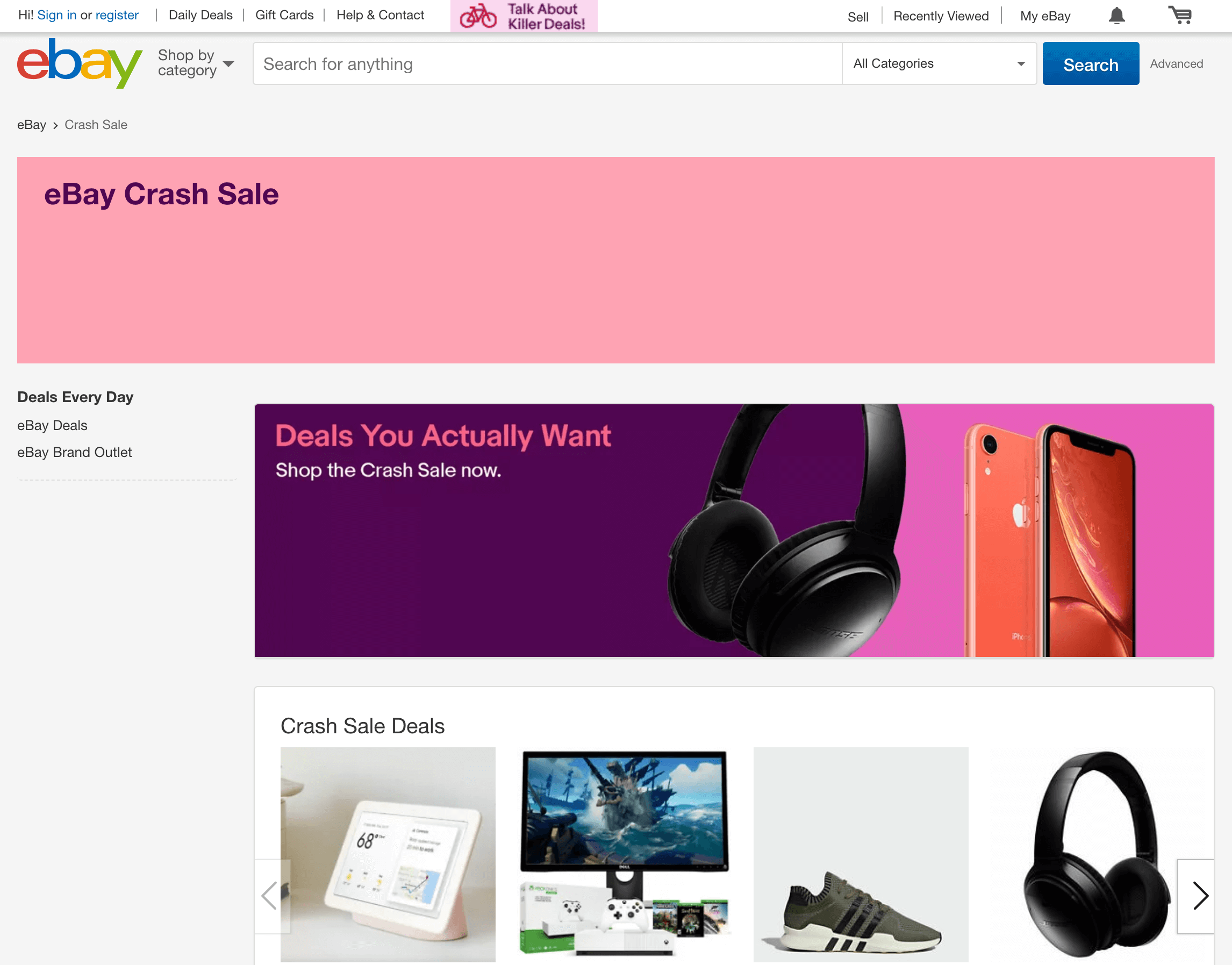
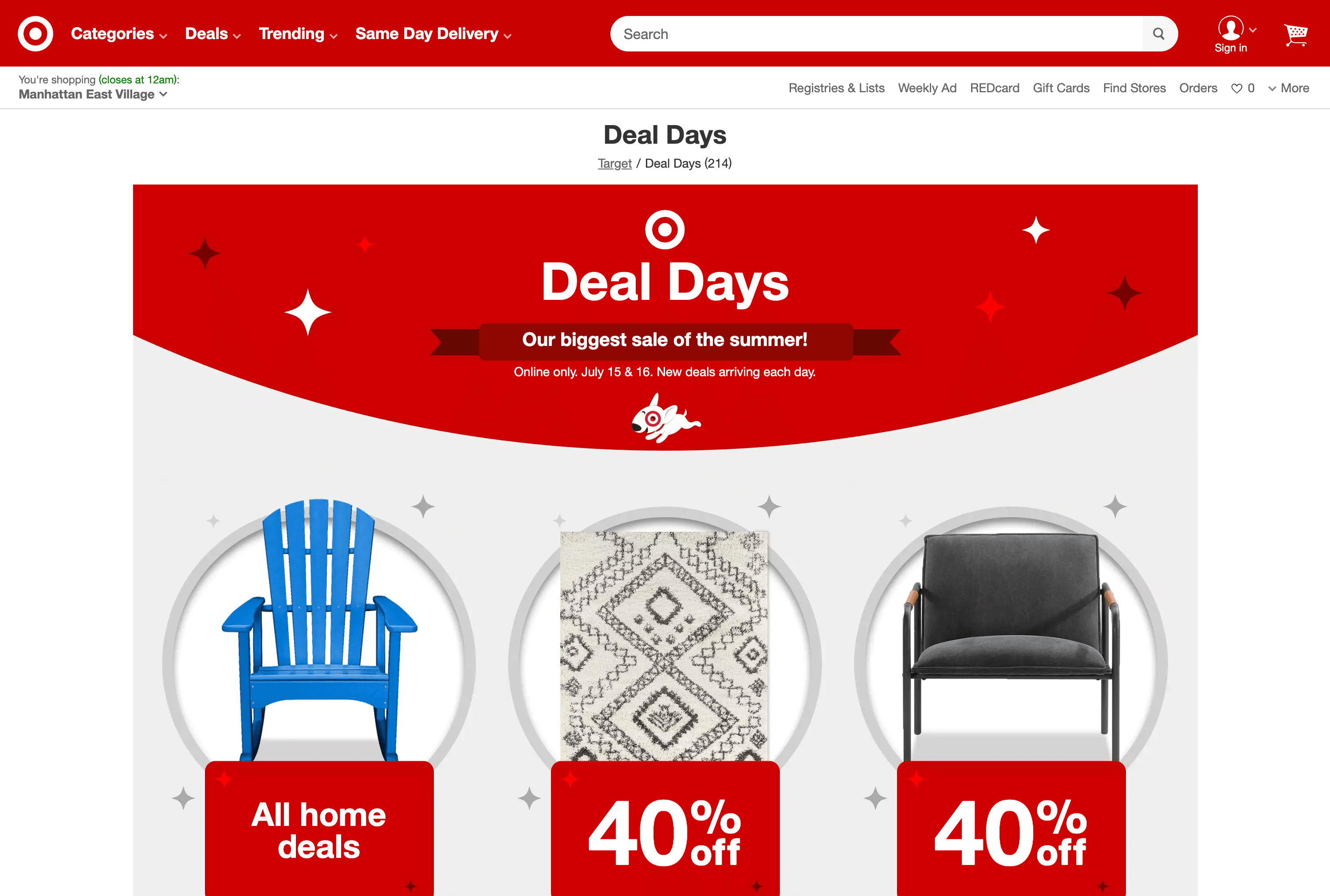

Promotion
Amazon and competing online retailers ran promotions online and offline before and during the event. For example, most retailers utilized social media to advertise specific deals and their events overall to their target audiences.
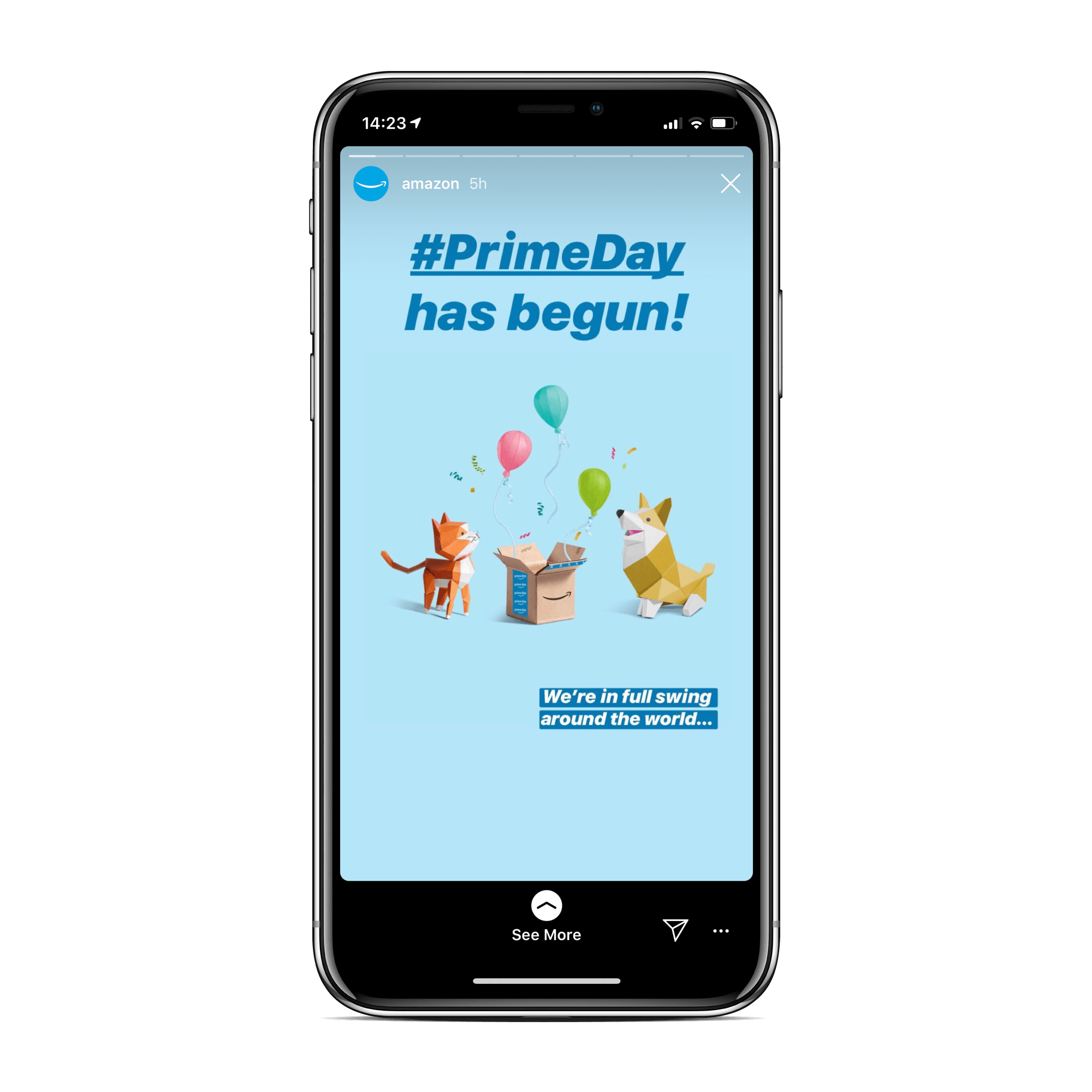
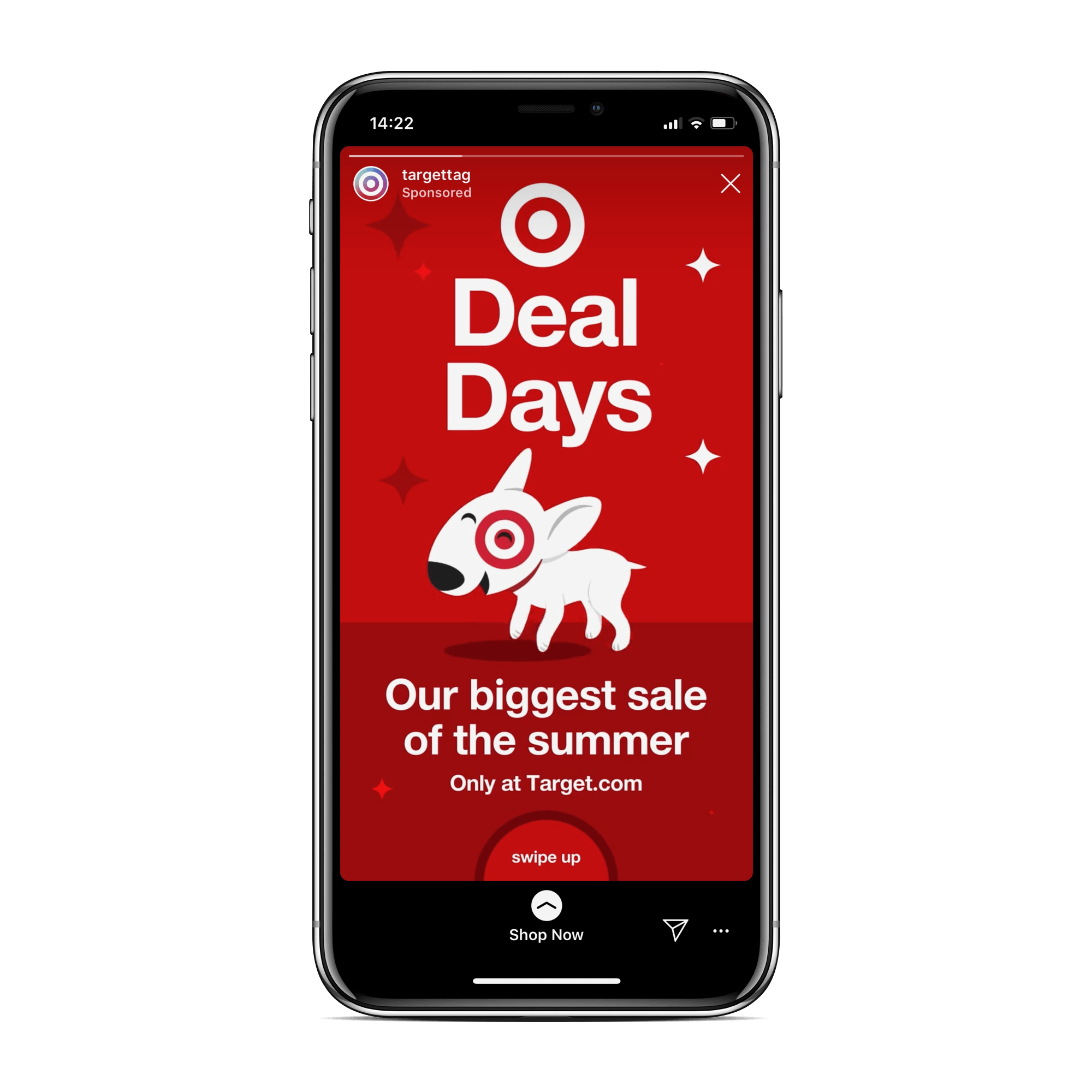
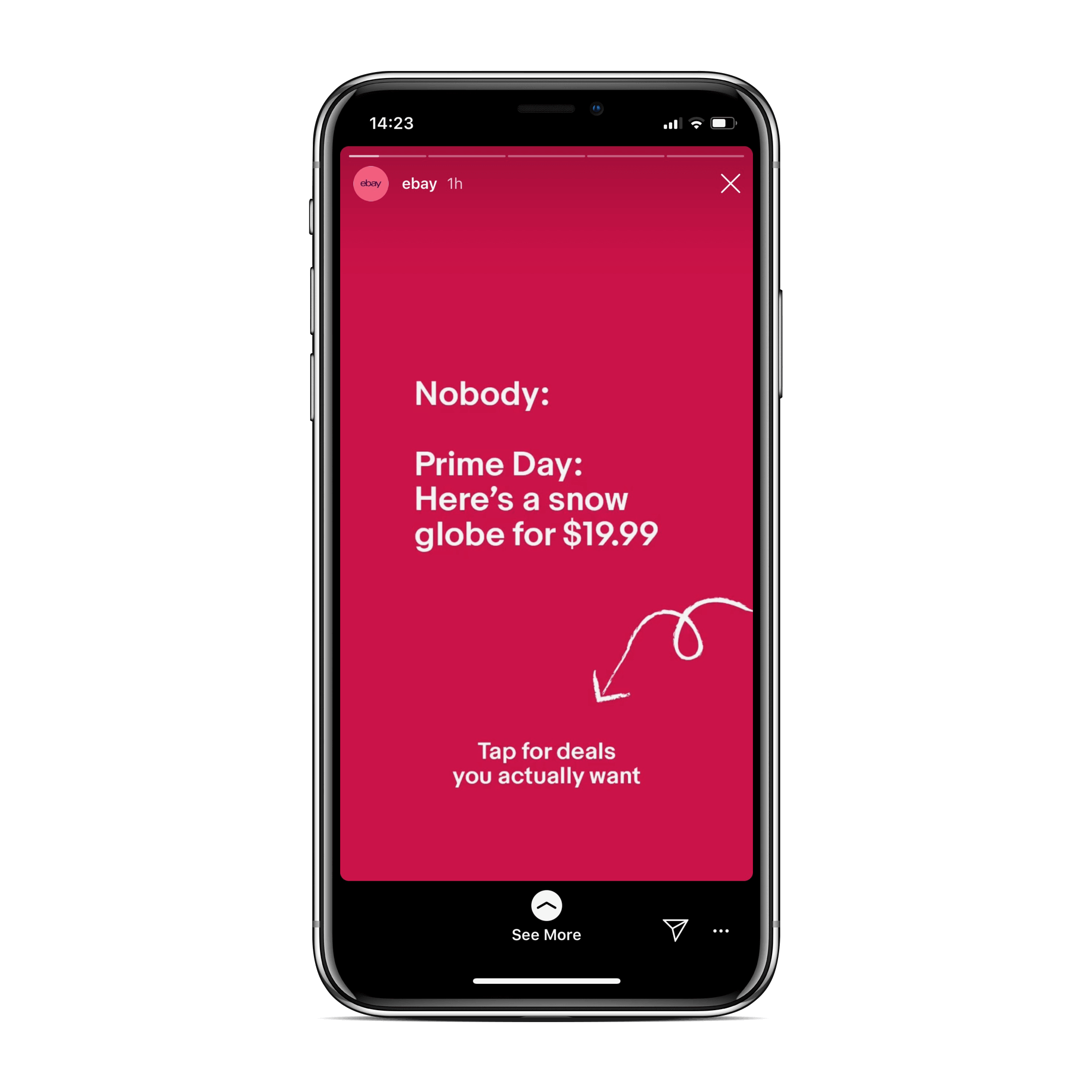
Amazon Technical Difficulties

Early on July 15th, Amazon was facing limited technical difficulties, which shoppers noticed when adding to cart failed. Last year as Prime Day started, Amazon met widespread issues, the issue this year was not as severe.
Prime Day 2018 started at 3 PM, compared to midnight this year, which drove more shoppers to the website than it could handle. “Some customers are having difficulty shopping, and we’re working to resolve this issue quickly,” Amazon said at the time on Twitter.
eBay’s Crash Sale this year was a mocking response to Amazon’s struggles in 2018, as the company explained: “If history repeats itself and Amazon crashes that day, eBay’s wave of can’t-miss deals on some of the season’s top items will excite customers around the world.”
eBay has also released a 60-second video, featuring a real-life teenager named Alexa educating her dad about Prime Day. “Prime Day is a holiday Amazon totally made up to get people excited about their parade of deals,” real-life Alexa said in the video. “At least real parades don’t charge a membership fee,” she added, noting that the deals include “random stuff nobody really wants.”

The company was using social media including Twitter and Instagram to mention Amazon’s early struggled this year too, starting July 16th with a tweet “Technically speaking, #PrimeDay had some difficulties yesterday - so we’re unlocking our limited time Crash Sale deals.”
Final Thoughts
In his 2015 letter to shareholders, Jeff Bezos said that the firm wanted “Prime to be such good value, you’d be irresponsible not to be a member.” Over the last couple of years, other online retailers have stepped up their game, introduced fast shipping, easy returns, and expanded assortment. The leader amongst them is Walmart, now boasting the same next-day shipping Amazon has as well as tens of millions of products available online. Walmart is trying to offer equal value without a membership fee, rendering a Prime membership no longer the irresponsible thing Jeff Bezos wants it to be.
This year Prime Day had hundreds of other online retailers launch their own sales events, and according to early estimates in aggregate, they all saw a meaningful sales lift. Even the deals were often similar, despite Amazon having more of them. Prime Day used to be about Prime itself, the value and reason of having Prime. Holding on to Prime for Prime Day is too no longer the irresponsible thing to do.
That’s why Prime Day this year focused so much on the word exclusive. Prime Day is no longer the sales event for the random products in Amazon’s infinite shelf of products. The event wants to offer exclusive products, and new product launches; things shoppers can’t find elsewhere. This year the number of exclusives was small, but as Amazon finished it’s 5th Prime Day, the next five Prime Days are shaping up to focus on bringing back the irresponsibility not to have Prime.
At least, that’s what Amazon will try to do.


